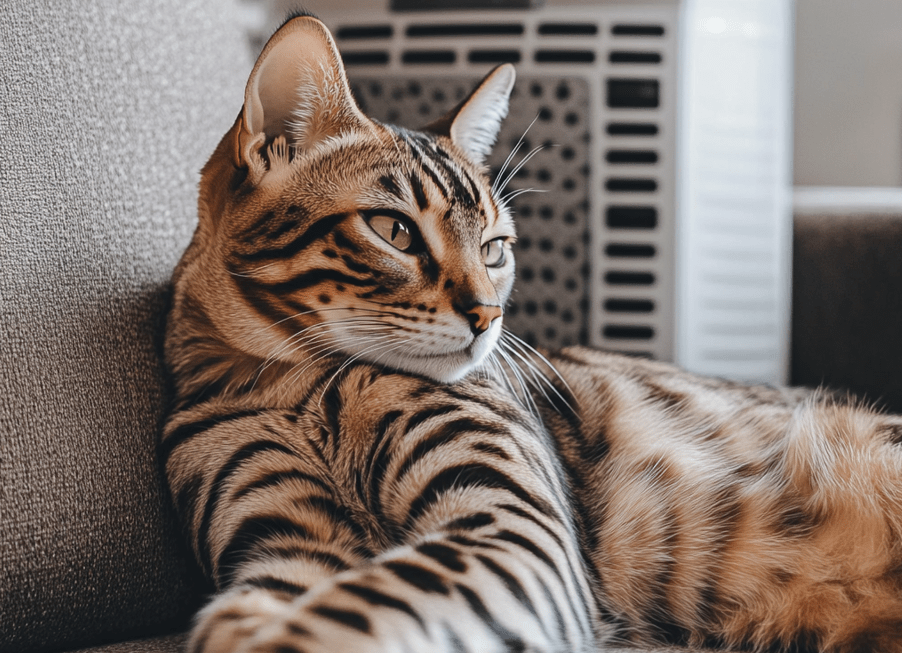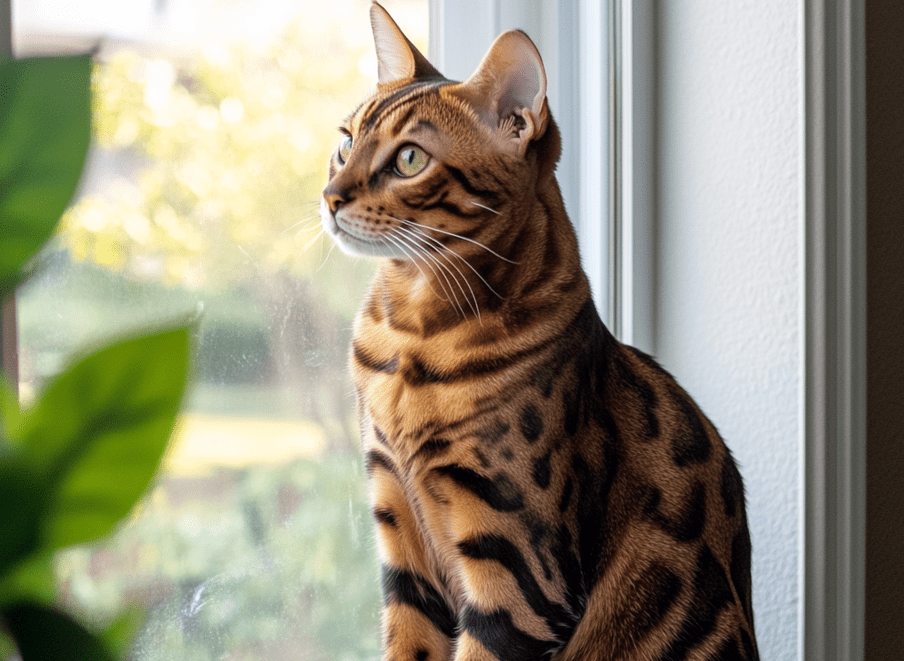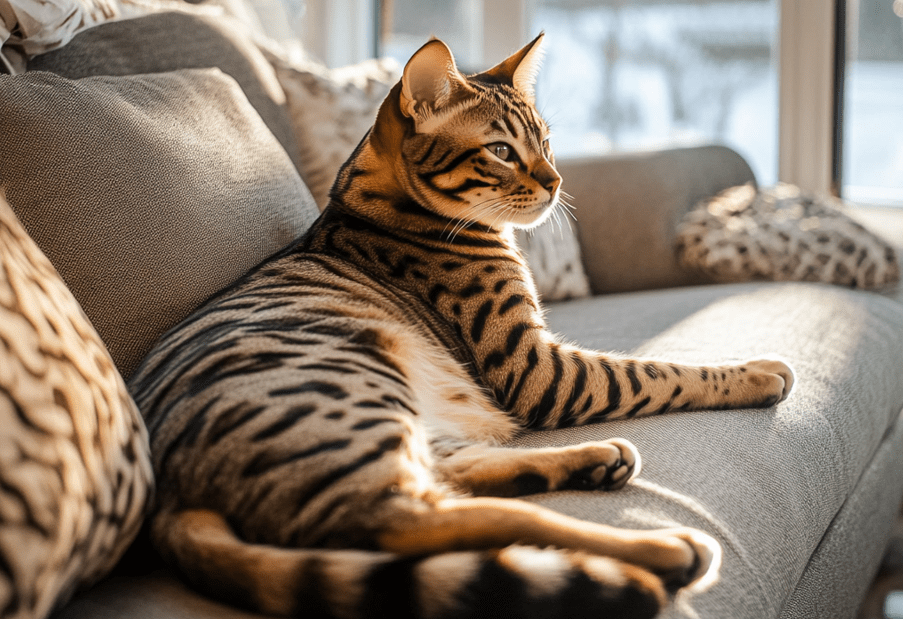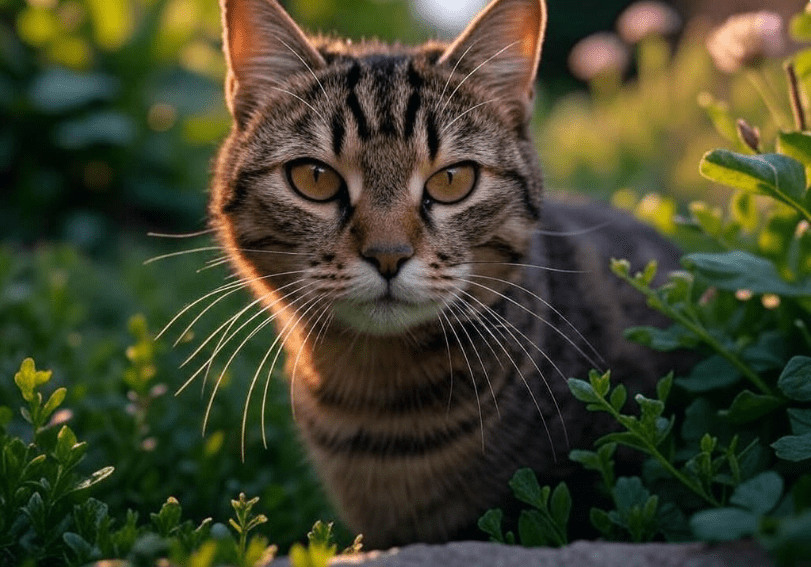
Bengal cats are renowned for their energetic, intelligent, and wild-like personalities, often displaying behaviors that set them apart from other breeds. One such trait is their Bengal cat ambushing behavior, where they hide, stalk, and pounce with playful enthusiasm. This behavior, rooted in their ancestral instincts, can surprise or even concern owners if not properly understood. This comprehensive guide explores the reasons behind this playful ambushing, how to manage it, and ways to channel it into positive activities, ensuring a happy and harmonious relationship with your Bengal.
What Is Bengal Cat Ambushing Behavior?
Bengal cat ambushing behavior refers to the instinctive tendency of Bengals to hide in strategic spots, stalk perceived “prey” (which could be you, a toy, or another pet), and then leap out for a playful pounce. This behavior mimics the hunting techniques of their wild ancestors, like the Asian leopard cat. While it’s typically harmless and playful, it can sometimes feel startling or aggressive if not properly contextualized.
Why Bengals Ambush
Hunting Instincts: Bengals retain strong predatory instincts, driving them to practice hunting through stalking and pouncing.
High Energy Levels: Their boundless energy seeks outlets, often through dynamic play like ambushing.
Intelligence and Curiosity: Bengals are highly intelligent and use ambushing as a way to engage their minds and environment.
Playful Nature: Ambushing is often a game for Bengals, a way to interact and seek attention.
The Roots of Ambushing Behavior
To fully understand Bengal cat ambushing behavior, it’s essential to consider their origins. Bengals are a hybrid breed, developed by crossing domestic cats with the Asian leopard cat. This lineage gives them a unique blend of domestic affection and wild instincts.
Evolutionary Background
In the wild, small felids like the Asian leopard cat rely on stealth and surprise to catch prey. Ambushing is an energy-efficient hunting strategy, allowing them to conserve energy while maximizing success. Domestic Bengals inherit these instincts, even though their “prey” might be a feather toy or your ankles.

Behavioral Triggers
Several factors can trigger ambushing in Bengals:
Boredom: A lack of stimulation can lead to increased ambushing as a way to entertain themselves.
Environmental Cues: Narrow hallways, furniture corners, or doorways naturally lend themselves to ambush setups.
Attention-Seeking: Bengals may ambush to initiate play or get your attention.
Routine Disruptions: Changes in schedule can prompt more ambushing as a way to cope with stress or boredom.
Is Ambushing Behavior Normal?
Yes, Bengal cat ambushing behavior is entirely normal and a hallmark of their playful, predatory nature. However, the intensity and frequency can vary depending on the cat’s personality, environment, and level of stimulation. While most ambushing is harmless, excessive or aggressive ambushing may indicate unmet needs or stress.
When to Be Concerned
Aggression: If ambushing includes hissing, growling, or scratching with intent to harm, it may signal stress or fear.
Obsessive Behavior: Constant ambushing without breaks could indicate boredom or anxiety.
Targeting Vulnerable Individuals: If your Bengal ambushes children, elderly people, or other pets excessively, intervention may be needed.
How to Manage Bengal Cat Ambushing Behavior
While ambushing is a natural behavior, you can manage and redirect it to ensure it remains fun and safe for everyone in the household. Below are practical strategies to channel this energy constructively.
1. Provide Ample Physical Exercise
Bengals need significant physical activity to burn off their high energy. Regular exercise can reduce the frequency of ambushing by satisfying their need for action.
Interactive Play: Use feather wands, laser pointers, or balls to mimic prey, allowing your Bengal to chase and pounce.
Climbing Structures: Install cat trees or shelves to encourage climbing and jumping, which tire them out.
Daily Play Sessions: Aim for at least 20–30 minutes of active play twice daily.
2. Engage Their Minds with Mental Stimulation
Bengals are highly intelligent and need mental challenges to stay content. Puzzle toys and training can redirect their ambushing instincts into productive activities.
Puzzle Feeders: Use treat-dispensing toys to make mealtime a mental workout.
Training Sessions: Teach tricks like “sit,” “fetch,” or navigating an obstacle course to engage their intellect.
Scent Games: Hide treats or catnip-scented toys for your Bengal to find, mimicking a hunt.
3. Create a Stimulating Environment
A rich environment reduces boredom-driven ambushing by giving your Bengal plenty to explore.
Vertical Spaces: Provide perches, shelves, or window seats for climbing and observing.
Hiding Spots: Offer tunnels, boxes, or cat condos where they can “ambush” toys or rest.
Rotate Toys: Keep play fresh by rotating toys weekly to maintain novelty.
4. Redirect Ambushing to Appropriate Targets
Teach your Bengal what’s acceptable to “hunt” by redirecting their focus.
Use Toys as Prey: When your Bengal starts stalking you, toss a toy to shift their attention.
Avoid Rough Play: Don’t use your hands or feet as play targets, as this encourages ambushing people.
Reward Positive Behavior: Praise or treat your Bengal when they ambush toys instead of people or pets.
5. Establish a Routine
Bengals thrive on consistency. A predictable routine for feeding, play, and rest can reduce stress-related ambushing.
Morning Play: Start the day with an active play session to burn energy.
Midday Enrichment: Leave puzzle toys or automated toys for solo play while you’re away.
Evening Bonding: End the day with interactive play and cuddles to reinforce positive behavior.
6. Social Interaction and Companionship
Bengals are social and may ambush to seek attention. Providing companionship can help.
Another Pet: If compatible, a second cat or cat-friendly dog can provide a playmate, reducing human-targeted ambushing.
Human Interaction: Spend quality time with your Bengal to fulfill their social needs.
Pet Cameras: Use interactive pet cameras to check in and play remotely when you’re away.
Addressing Excessive Ambushing
If your Bengal’s ambushing becomes disruptive or aggressive, take these steps to address it.
1. Rule Out Medical Issues
Sudden changes in behavior, including increased ambushing, could indicate health problems like pain, hyperthyroidism, or neurological issues. Consult a veterinarian to rule out medical causes.
2. Reduce Stressors
Stress can amplify ambushing. Identify and minimize stressors such as:
-
Loud noises or sudden changes in the household
-
Lack of safe spaces to retreat
-
Conflicts with other pets
3. Consult a Behaviorist
If ambushing persists despite your efforts, a feline behaviorist can assess your Bengal’s environment and behavior, offering tailored solutions.
4. Spay or Neuter
Unspayed or unneutered Bengals may exhibit more intense ambushing due to hormonal drives. Spaying or neutering can reduce this behavior.
Fun Ways to Channel Ambushing Instincts
Turn your Bengal’s ambushing behavior into a positive, bonding experience with these fun activities.
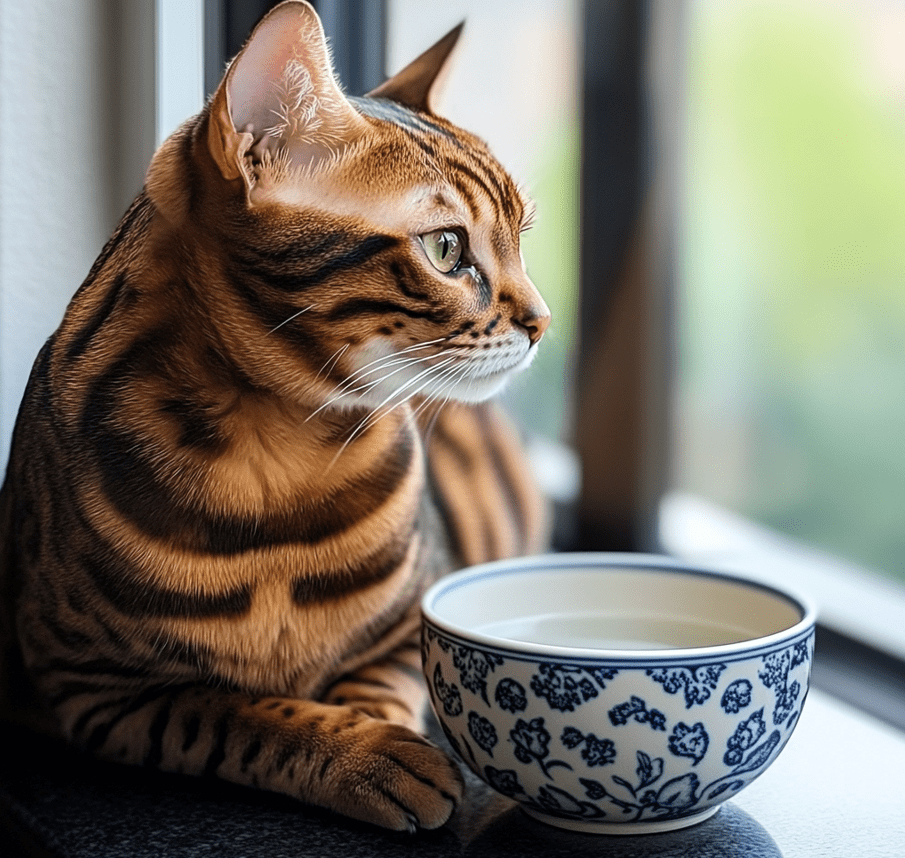
1. DIY Ambush Games
Create games that satisfy their stalking instincts:
Tunnel Chase: Set up a tunnel and drag a toy through it for your Bengal to “hunt.”
Box Ambush: Cut holes in a cardboard box and dangle a toy near the openings.
Feather Surprise: Hide behind furniture and pop out with a feather wand to mimic prey.
2. Obstacle Courses
Build a home obstacle course with tunnels, boxes, and perches. Guide your Bengal through it with a toy, encouraging them to stalk and pounce in a controlled way.
3. Interactive Toys
Invest in toys designed for predatory play:
Robotic Mice: Battery-operated toys that move unpredictably.
Automated Laser Toys: Move beams randomly to engage hunting instincts.
Kick Toys: Long toys your Bengal can grab and “kill” safely.
4. Water Play for Bengals
Many Bengals love water. Set up a shallow container with floating toys for them to “ambush” or use a pet fountain to spark curiosity.
Understanding Your Bengal’s Body Language
Recognizing the signs of an impending ambush can help you respond appropriately.
Crouching Posture: A low stance with a twitching tail indicates they’re ready to pounce.
Dilated Pupils: Wide eyes show excitement and focus.
Ears Forward: Alert ears signal they’re tracking “prey.”
Slow Stalking: Deliberate, quiet steps mean they’re in hunting mode.
When you spot these signs, redirect their focus to a toy or engage them in play to prevent unwanted ambushing.
Common Myths About Bengal Cat Ambushing Behavior
Let’s debunk some misconceptions that can cloud understanding of this behavior.
Myth 1: Ambushing Means Aggression
Truth: Most ambushing is playful, not aggressive. True aggression includes hissing, growling, or unsheathed claws with intent to harm.
Myth 2: Bengals Are Too Wild for Homes
Truth: While Bengals have wild instincts, they’re domesticated and thrive in loving homes with proper care and stimulation.
Myth 3: Punishment Stops Ambushing
Truth: Punishing a Bengal for ambushing can increase stress and worsen behavior. Redirecting and rewarding positive actions are more effective.
Conclusion
Understanding and managing your Bengal cat’s playful ambushing behavior is key to fostering a happy, healthy relationship with your pet. By recognizing the instincts behind this behavior, providing ample stimulation, and redirecting their energy into positive outlets, you can turn ambushing into a fun and enriching part of your Bengal’s life. With the strategies outlined in this guide, you’ll be well-equipped to keep your Bengal entertained, engaged, and thriving while keeping your home harmonious.


